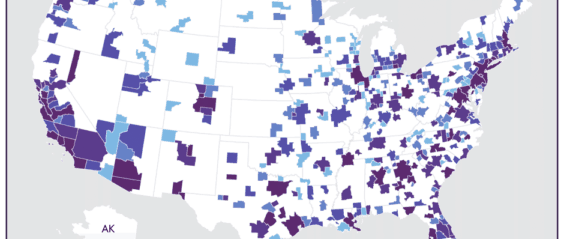Contextual Healing
It’s clear that the public v. non-public school discussion will continue at full throttle for the next several years. The Johns Hopkins Institute for Education Policy has produced a handy overview of research and scholarship related to non-public school outcomes. The outcomes are mixed but the piece gives some useful (and brief) context about each study. The overview’s stated bottom line: “while the presence of diverse, state-supported private schools can be beneficial to students, there is nothing inevitable about their success.”
In the Weeds
The Archbridge Institute has released a primer on Economic Mobility that provides a useful overview of the issue. The primer’s first three sentences lay its goals out well: “Economic mobility has become a leading policy concern across the political spectrum in America. But “opportunity” and “mobility” are elusive concepts. Without clearheaded thinking about what they mean and how to measure a particular way of viewing opportunity, it is easy to misinterpret the evidence on economic mobility.”
It’s a dense read and ideally suited for those interested in going deep on the subject. Here are a some of the key findings:
- Consistent with past research, the report documents the strong odds that poor children will fare no better relative to their peers than their parents did. Nearly half of children with parents in the bottom fifth of family income end up in the bottom fifth as well. Children who grow up with the richest parents are only somewhat less immobile.
- Roughly three in four adults—and the overwhelming majority of poor children—live better off than their parents after taking the rising cost of living into account. This rate is higher than in the headline findings of a recent well-publicized paper by Stanford University economist Raj Chetty and his colleagues. This report shows that Chetty et al.’s results can be replicated with survey data but illustrates why the headline finding paints too dour a picture of mobility.
- The report shows, for the first time, tables that illustrate the likelihood poor and well-to-do adults will have a same-sex sibling who is also poor or well-to-do. The family incomes of siblings do not strongly resemble each other, except at the bottom and top. Among adults in the bottom fifth of income who have a samesex sibling, over 40 percent of the time that sibling is also in the bottom fifth. The family incomes of siblings at the top are nearly as similar.
A New Slant
An article by Andrew Briggs in National Affairs makes a nice case for the need to rethink retirement security, including social security. The U.S. retirement system is largely based on a policy chassis from the 1930s–several economic cycles ago–and he argues that it’s time for an upgrade. The piece offers some specific solutions and does a good job setting up a decision-making rationale that extends beyond the “social security will go bankrupt” rhetoric of many entitlement discussions.
The Next Evolution
Research has identified co-working spaces to be the fastest-growing type in the United States, amounting to 27-million-square feet as of 2016. A new paper from the Brookings Institution’s Anne T. and Robert M. Bass Initiative on Innovation and Placemaking examines how the increase of innovation spaces–research institutes, incubators, accelerators, innovation centers, co-working spaces, and start-up spaces–reflects work changes in the broader economy. Here are three main findings:
- The “open” and collaborative nature of innovation is changing the nature of design. Research reveals that innovation is increasingly collaborative, involving two or more people during the process of innovation. Collaboration also importantly underpins “open innovation” and convergence—a trend where disparate sectors and/or disciplines come together as a means to innovate. For the physical design of space, this translates into creating flexible and highly responsive spaces that allow people, in a range of group configurations, to decide what works.
- Face-to-face communication has growing currency. Even with advancements in technology, interviews suggest that the intimacy achieved through in-person face-to-face communication remains highly valued.
- The growing pervasiveness of technology is driving firms to experiment in balancing organizational desires, technological power and human needs. The last 10 years marked a tremendous infusion of technologies into innovation spaces, literally re-wiring how, where and when people connect and communicate. The next decade will offer lessons on how, through trial and error, firms have retained the value of “human-ness” in the midst of such change.
What we're reading
Mapping the New Urban Crisis
America today is beset by a New Urban Crisis, defined by the back-to-the-city movement of the affluent/educated —accompanied by rising inequality, deepening economic segregation, and increasingly unaffordable housing.... Read the rest-
The De-Electrification of the U.S. Economy
-
One county (Mecklenburg), different views on opportunity
-
The Solution to AI Taking Jobs Is Training, Not Taxes
-
How to Quantify (and Fight) Gerrymandering
-
Redefining accountability to treat teachers like professionals
-
WCU students analyze impact of tourism on local economies


